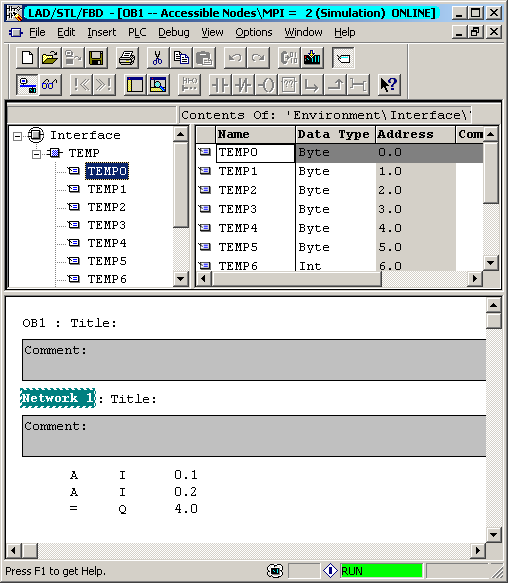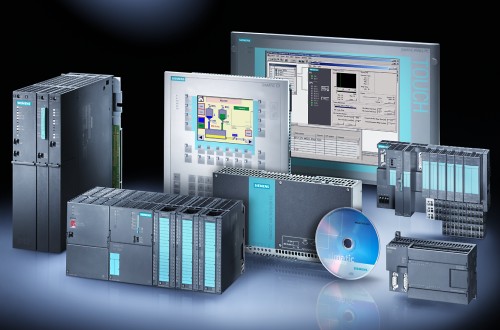


STEP 7 SIEMENS TUTORIAL UPDATE
In order to update PLC tags without experiencing the post-back, we can use some more JavaScript to update the value in the background. This is because a post-back is occurring and the page gets refreshed. Notice how the page flickers when the save button is pressed. You should be able to edit the tag value using the web page you just created.
STEP 7 SIEMENS TUTORIAL PASSWORD
The default user name is admin and the default password is blank so you can leave that field empty.Īfter you have logged-in, browse to the page and go online with the PLC. Make sure to log in before navigating to the editor page you just created. The PLC will not allow you to modify values unless you are logged in. You will not be able to edit the tag values unless you include this comment for each tag.įirst create a new variable in the "webdata" DB:po The special comment field (AWP_In_Variable) at the top tells the PLC which tags are allowed to be modified. The following HTML page illustrates the simplest way of editing PLC tag values. Be careful though, as you add more tags to an HTML page, the page loading time increases.Ī user web page would not be very helpful without allowing the user to modify PLC values. This would allow you to update several tags on the screen using just one external data file. A more advanced option would be to put several tags in this file and format the text into a JSON structure. In the simple example above, we placed a single tag value in the file "IOCounter.htm".
STEP 7 SIEMENS TUTORIAL CODE
The JavaScript function above retrieves the current tag value by requesting the contents of the file "IOCounter.htm" and then using this value to set the text of the Label with id="counter." This code runs automatically every second using the JavaScript setInterval function. First create a data block called "webdata" and add define an integer variable called "counter." In your PLC, add some code to make this increment around every second:ĭownload your project and then go online with the PLC to verify that the value is incrementing: In order to read PLC data we need to modify our file to include a special reference to the tag we are trying to read. I'm not sure what "awp" means, but it is a required part of the URL: The format of the User-defined web page URL is as follows. If you click this link, you will see your Hello World page: The name in the hyperlink matches the Application name you specified in the User-defined Pages config screen in TIA Portal: There is a link on the left for User Pages. If you browse to the IP Address of your PLC, you will see the main Siemens Web server login page.

It handles retrieving the correct fragment from the Fragment data blocks as shown below: Insert the This function process requests from the browser and synchronizes the data in the User Pages. DB333 is used in conjunction with the WWW Function to control the retrieval and delivery of the fragments: In order for user pages to work, you have to call the We already know that DB334 stores the fragments. They will all get converted into data block fragments: You can include HTML files, JavaScript, CSS Files, and even image files. An array is dimensioned for each file.īelow you can see how each byte from the file is packed into the array:Īs you add more files to your folder, you may exceed the maximum number of bytes that can be contained in a data block, when this happens, another sequential data block is created. When you click the "Generate Blocks" button, the compiler takes all of these files and copies each byte into an array in the element of the Fragment data blocks. Initially, we just created a single "index.htm" file, but let's suppose you had several files in this folder. You will notice that the "Generate Blocks" function creates two new data blocks in your project, and you may be wondering what these are for.įragments are the name given to each file in your user pages folder. Then click Generate Blocks to compile the user page: Set the HTML Directory to the folder you created and the Default HTML page to the file you created. To enable user pages, navigate to the device configuration -> Web server -> User-defined Web pages.

Now we can enable the user pages and use this file we created.


 0 kommentar(er)
0 kommentar(er)
